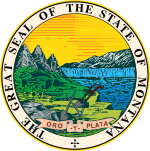
The 1978 United States Senate elections were held on November 7, in the middle of Democratic President Jimmy Carter's term. The 33 seats of Class 2 were contested in regular elections. Special elections were also held to fill vacancies.

The 1976 United States Senate elections was an election for the United States Senate. Held on November 2, the 33 seats of Class 1 were contested in regular elections. They coincided with Democrat Jimmy Carter's presidential election and the United States Bicentennial celebration. Although almost half of the seats decided in this election changed parties, Carter's narrow victory did not provide coattails for the Democratic Party. Each party flipped seven Senate seats, although, one of the seats flipped by Democrats was previously held by a Conservative.

The 1972 United States Senate elections were held on November 7, with the 33 seats of Class 2 contested in regular elections. They coincided with the landslide re-election of Republican President Richard Nixon. Despite Nixon's landslide victory, Democrats increased their majority by two seats. The Democrats picked up open seats in Kentucky and South Dakota, and defeated four incumbent senators: Gordon Allott of Colorado, J. Caleb Boggs of Delaware, Jack Miller of Iowa, and Margaret Chase Smith of Maine. The Republicans picked up open seats in New Mexico, North Carolina, and Oklahoma, and defeated one incumbent, William B. Spong Jr. of Virginia.

The 1964 United States Senate elections were held on November 3. The 33 seats of Class 1 were contested in regular elections. Special elections were also held to fill vacancies. They coincided with the election of President Lyndon B. Johnson by an overwhelming majority, to a full term. His Democratic Party picked up a net two seats from the Republicans. As of 2023, this was the last time either party has had a two-thirds majority in the Senate, which allowed the Senate Democrats to override a veto, propose constitutional amendments, or convict and expel certain officials without any votes from Senate Republicans. However, internal divisions would have prevented the Democrats from having done so. The Senate election cycle coincided with Democratic gains in the House in the same year.

The 1954 United States Senate elections was a midterm election in the first term of Dwight D. Eisenhower's presidency. The 32 Senate seats of Class 2 were contested in regular elections, and six special elections were held to fill vacancies. Eisenhower's Republican party lost a net of two seats to the Democratic opposition. This small change was just enough to give Democrats control of the chamber with the support of an Independent who agreed to caucus with them, he later officially joined the party in April 1955.
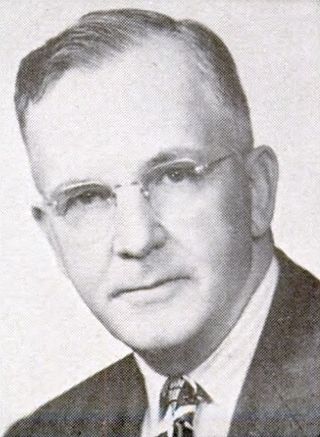
Wesley Abner D'Ewart was a U.S. Republican politician who served in the United States House of Representatives from Montana's 2nd congressional district from June 5, 1945, to January 3, 1955.
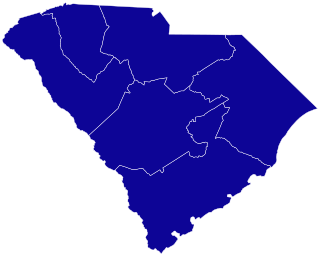
The 1954 United States House of Representatives elections in South Carolina were held on November 2, 1954 to select six Representatives for two-year terms from the state of South Carolina. The primary elections were held on July 13. All six incumbents were re-elected and the composition of the state delegation remained solely Democratic.
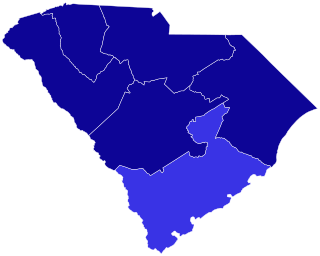
The 1948 United States House of Representatives elections in South Carolina were held on November 2, 1948 to select six Representatives for two-year terms from the state of South Carolina. Four incumbents were re-elected, but John J. Riley of the 2nd congressional district was defeated in the Democratic primary by Hugo S. Sims, Jr. The seat remained with the Democrats along with the open seat in the 3rd congressional district and the composition of the state delegation remained solely Democratic.

The 1976 United States Senate election in Montana took place on November 2, 1976. Rather than seek a fifth term, incumbent United States Senator Mike Mansfield, a Democrat, opted to retire, creating an open seat. United States Congressman John Melcher, who had represented Montana's 2nd congressional district from 1969 to 1977, won the Democratic nomination and defeated Stanley C. Burger, the Republican nominee, by a wide margin in the general election. This was the first open seat election in Montana since 1960 and the first open seat election in Montana for the Class 1 Senate seat since 1922.

The 2014 United States House of Representatives elections in Oklahoma were held on Tuesday, November 4, 2014, to elect the five U.S. representatives from the state of Oklahoma, one from each of the state's five congressional districts. The elections coincided with other elections to the United States Senate and House of Representatives and various state and local elections, including the Governor of Oklahoma and both of Oklahoma's United States Senate seats. Primary elections were held on June 24, 2014. Primary runoffs were held on August 26, 2014, in contests where no candidate won more than 50% of the vote.
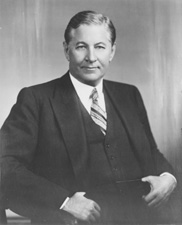
The 1934 United States Senate special election in Montana took place on November 6, 1934. Incumbent United States Senator John E. Erickson, who, as governor, had appointed himself to the seat in 1933 upon the death of Thomas J. Walsh, ran for re-election. However, he was defeated in the Democratic primary by James E. Murray, who was the former Silver Bow County Attorney and the Chairman of the State Advisory Board of the Public Works Administration. In the general election, Murray defeated Scott Leavitt, a former United States Congressman who had represented Montana's 2nd congressional district, and an independent candidate in a landslide to win his first term in the Senate.
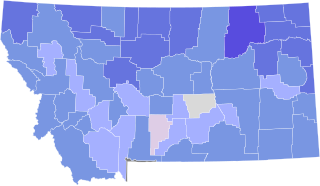
The 1930 United States Senate election in Montana took place on November 3, 1936. Incumbent United States Senator James E. Murray, who was first elected to the Senate in a special election in 1934, ran for re-election. He narrowly emerged from a competitive and close Democratic primary, wherein he was challenged by United States Congressman Joseph P. Monaghan, who represented Montana's 1st congressional district. In the general election, Murray was opposed by Thomas O. Larson, a State Senator and the Republican nominee, and Monaghan, who, after losing the primary, ran as an independent candidate. Murray ended up winning a second term, and his first full term, in a landslide, defeating both of his opponents by a comfortable margin.

The 1942 United States Senate election in Montana took place on November 3, 1942. Incumbent United States Senator James E. Murray, who was first elected to the Senate in a special election in 1934 and was re-elected in 1936, ran for re-election. Following his victory in a competitive Democratic primary, Murray advanced to the general election, where he was opposed by former United States Attorney for the District of Montana Wellington D. Rankin, the Republican nominee and brother of representative Jeannette Rankin. In a closely fought election, Murray narrowly defeated Rankin to win re-election to his third term and his second full term in the Senate.

The 1948 United States Senate election in Montana took place on November 2, 1948. Incumbent United States Senator James E. Murray, who was first elected to the Senate in a special election in 1934 and was re-elected in 1936 and 1942, ran for re-election. After winning the Democratic primary, he faced Tom J. Davis, an attorney and the Republican nominee, in the general election. Following a narrow re-election in 1936, Murray significantly expanded his margin of victory and comfortably won re-election over Davis, resulting in him winning his fourth term and his third full term in the Senate.

The 1960 United States Senate election in Montana took place on November 8, 1960. Incumbent United States Senator James E. Murray, who was first elected to the Senate in a special election in 1934 and was re-elected in 1936, 1942, and 1948, and 1954, declined to seek re-election, creating an open seat. United States Congressman Lee Metcalf won out in a crowded Democratic primary and faced off against former United States Congressman Orvin B. Fjare, who won in a similarly-crowded Republican primary. Following a close general election, Metcalf narrowly defeated Fjare to win his first term in the Senate.

The 1922 United States Senate election in Montana took place on November 7, 1922. Incumbent United States Senator Henry L. Myers, who was first elected to the Senate in 1910, and was re-elected in 1916, declined to seek re-election. Former United States Attorney Burton K. Wheeler won the Democratic primary and advanced to the general election, where he faced Carl W. Riddick, the United States Congressman from Montana's 2nd congressional district and the Republican nominee. Ultimately, Wheeler defeated Riddick comfortably and won his first term in the Senate.

The 1928 United States Senate election in Montana took place on November 6, 1928. Incumbent United States Senator Burton K. Wheeler, who was first elected to the Senate in 1922, ran for re-election. After successfully defeating several challengers in the Democratic primary, Wheeler advanced to the general election, where he faced Republican nominee Joseph M. Dixon, the former Governor of Montana who had previously served in the United States Senate from 1907 to 1913. Though the election was closer than Wheeler's first election, he still managed to defeat Dixon to win his second term in the Senate.

The 1952 United States Senate election in Montana took place on November 4, 1952. Incumbent United States Senator Zales Ecton, who was first elected to the Senate in 1946, ran for re-election. Ecton won the Republican primary uncontested, and advanced to the general election, where he faced Mike Mansfield, the United States Congressman from Montana's 1st congressional district and the Democratic nominee. Following a close campaign, Mansfield narrowly defeated Ecton, winning his first of several terms in the Senate.

The 1964 United States Senate election in Montana took place on November 3, 1964. Incumbent United States Senator Mike Mansfield, who was first elected to the Senate in 1952 and was re-elected in 1958, ran for re-election. Mansfield won the Democratic primary in a landslide, and advanced to the general election, where he faced Alex Blewett, the Majority Leader of the Montana House of Representatives and the Republican nominee. Though Mansfield's margin was quite reduced from 1958, he still overwhelmingly defeated Blewett and won his third term in the Senate in a landslide.

The 1960 Montana gubernatorial election took place on November 8, 1960. Incumbent Governor of Montana J. Hugo Aronson, who was first elected governor in 1952 and was re-elected in 1956, declined to run for re-election. Donald Grant Nutter, a former state senator, narrowly won the Republican primary, and advanced to the general election, where he was opposed by Paul Cannon, the Lieutenant Governor of Montana and the Democratic nominee. Nutter defeated Cannon by a fairly wide margin, winning his one and only term as governor, as he would die just a year into his term.

